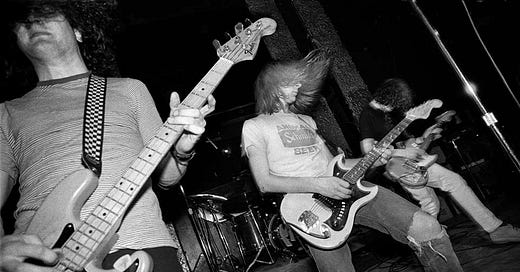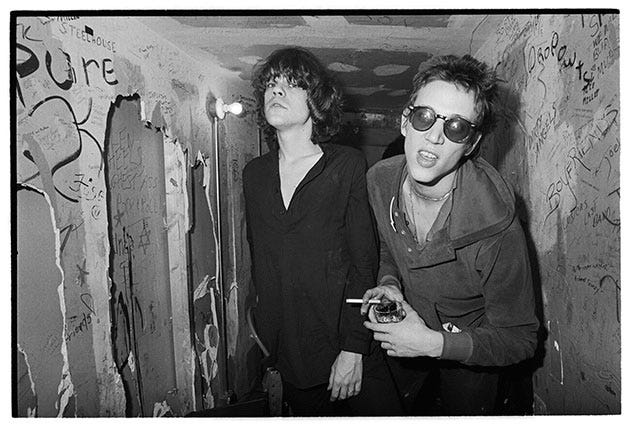Connected friction
What have 70+ trend reports and the concept of "scenius" got in common? They benefit from connection and friction.
During the pandemic's enforced WFH period, one of the most challenging aspects for me was keeping my creative muscles active. I got back into playing my guitar, which definitely helped. I went for long walks, ran every morning, and even tried kicking a football around the garden to see if it helped freshen my thinking.
Those tactics mostly worked, particularly the walking part, but the missing ingredient was the energy generated from being in a room with other people.
Studies suggest that brainstorming isn’t an effective way to generate ideas. Instead, experts encourage you to work on ideas individually or in small groups, then share your ideas more widely for builds. And that sharing session is often where the energy for your pitch or campaign comes from.
Slightly counterintuitively, sometimes that energy comes from challenging each other’s thinking. At Headland, one of our house phrases is, “Let’s kick the tyres on that”. We use it as a short-hand for checking an idea from all angles and perspectives. It’s a tricky bit of alchemy, because you can’t do it too early in the creative process.
Sharing an idea is hard, and as Jony Ive once said, “Ideas ultimately can be so powerful, they begin as fragile, barely formed thoughts, so easily missed, so easily compromised, so easily just squished.” An idea needs building before you can test it. Think “MVP”, a scratchy-home demo or a loaf of sourdough having a bench rest.
Only once your ideas have achieved this stage can you start pulling them in different directions to ensure they can withstand execution. I used to be mildly terrified of pitching an idea to one of my old creative directors. But I found the probing questions he’d ask me about how EXACTLY it would work and what EXACTLY the outputs would look like ensured we ended up pitching something the client loved.
It’s not an easy process, and can leave your ego feeling a little bruised sometimes, but that friction, those positive disagreements often make all the difference.
That element of the creative process was on my mind again this week after reading
’s piece on the death of what Brian Eno called “scenius”. To quote Leslie, scenius (scene + genius) refers to:“The collective genius that can emerge when a population of diverse and fertile talents living in geographical proximity form a loose community or ‘scene’.”
Think punk, hip hop and grunge. Think the Romantic poets, the Bloomsbury set or the Beat poets. But at some point around the beginning of the 2010s, the geographical scene appears to have become yet another part of modern life that now only exists in our nostalgic recollections.
Why is that? Leslie suggests it’s partly due to the lack of low-cost accommodation in big cities - I love a music history book, and this factor often stands out. Up-and-coming musicians frequently find decrepit, run-down buildings and turn them into hotspots. Where are those decrepit buildings now?
There’s also one of the pandemic’s lingering effects to factor in, namely that we’re more solitary now than ever. Add that to the fact that it is extremely expensive to socialise and that there’s a dearth of places to do it in the evenings (particularly if you want to go to a gig), and it’s difficult to see how a scene could happen in the 2020s.
You might reasonably ask at this point - so what? Isn’t this yet another dose of nostalgia in an era already drowning in it, with Bridget Jones and When Harry Met Sally returning as our most recent hits of 90s retro?
Well, yes, but the scenes do offer something beyond simply another hit of nostalgia. Namely, the alchemy they managed to capture between connection and friction.
Those scenes' bands, artists, and writers were often highly competitive. This competition helped drive them forward and is sometimes credited with elevating the scene's overall output. In a similar vein, The Beatles and The Beach Boys engaged in such competition in the 1960s, with Pet Sounds aiming to outdo Rubber Soul and then Sgt Pepper aiming to outdo Pet Sounds.
To continue the underlying 90s nostalgia theme, I’m reading Everett True’s book about Nirvana at the moment (approximately the 1,057th book I’ve read about Nirvana). The scene around Sub Pop and Seattle also exemplified this theme of connection and friction, with bands sharing stages but equally aiming to differentiate their sounds to stand out from the crowd.
These scenes, artificially constructed by the media or not, were also helpful entry points for potential fans. It's a shortcut for discovery if you like. Teenage music fans would come across Nirvana on MTV and, from there, bridge into the likes of Pearl Jam, Mudhoney, Alice In Chains, etc.
Scenes open doors in likely the same way last summer’s rise of Sabrina Carpenter, Chappell Roan and Kacey Musgraves did for teenagers of this generation. And the friction between those artists gave it some spice and more interesting stories to tell. It was mildly fun that all the other bands liked sniping at Smashing Pumpkins - it didn’t put me off listening to them.
Arguably, we could do with more of this friction amongst the abundant connections we have at the touch of a button. Perhaps Spotify could add a “This artist beefed with…” set of suggestions to sit alongside its “Fans also like…” suggestions. Or a Larry David-inspired “spitelist” to accompany your daylist.
And it’s arguably not just our creative culture that could use more friction among its connections. We could definitely apply this to the annual tranche of trend analyses and predictions.
That’s certainly the view of Reddit’s
, who publishes an annual “META Trends” analysis, distilling down 70+ reports and presentations into a set of meta trends (we’ve already seen someone do the genAI version of this).Matt found that even though there are more trend reports and forecasts than ever before, those reports are not only similar to each other, they’re also generally recycling previous ideas. The majority of the “trends” the reports cover are “Dominant” or “Residual” (either already big or have been the next big thing for a long time). Partly, this stems from the fact that, to go back to scenes again, “90% of trend reports come from only 10 cities in the world”.
We’re desperate for the “new” - exciting trends that will breathe freshness into our thinking and agency-client relationships. The problem is that, as much as some people like to preach otherwise, the pace of cultural change is slow. The most impactful trends are the slow-moving ones, the deeper shifts in human behaviour that mean for our campaign planning than “Brat summer” or “brain rot”.
Identifying those trends often comes from that alchemical blend of connection and friction. That blend most commonly starts with informed opinions - reviewing the data, finding what you think is interesting and sharing why you think that’s interesting with colleagues and peers.
It could also come from spotting connections between the seemingly unconnected - Matt Klein talks about how the connections (the edges) are more interesting than the “trends” (or nodes) themselves. In campaign planning and creative sessions, that’s often where the magic comes from - “What if we took x and overlaid it with y?”
It’s unlikely you’ll find a trend report that will do that for you in exactly the way you want. The job is to read, distil, weed out, and combine. And arguably, if ideas or trends you’d like to connect rub against each other and create some sparks, then it's all the better to keep your creative muscles fit and firing.





